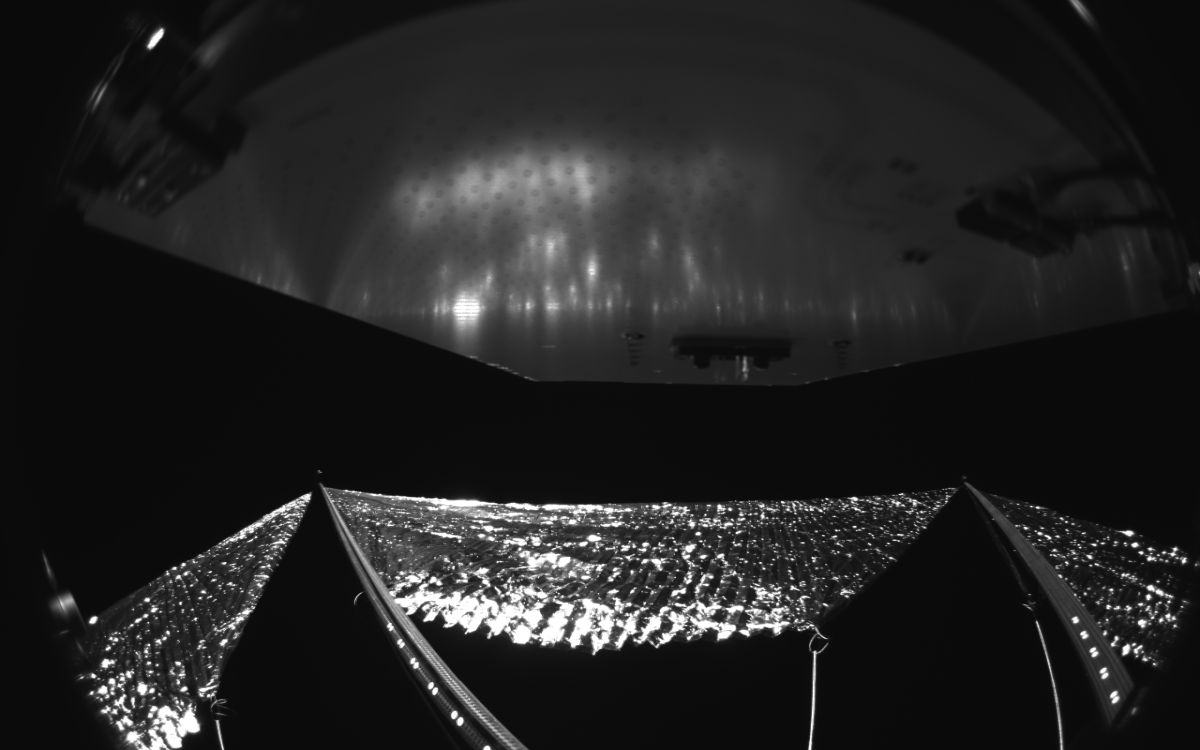Since deploying its sail last week, the Advanced Composite Solar Sail System spacecraft continues sending images and data, helping the team better understand how the boom technology demonstration performed. The primary objective of the demonstration is to conduct the deployment operation and use it to inform the use of large-scale sails for future missions. The mission team is continuing to analyze the incoming data and prepare for the next steps in the technology demonstration over the next couple of weeks.
Currently orbiting Earth, the spacecraft can be seen with its reflective sails deployed from the ground. As part of the planned deployment sequence, the spacecraft began flying without attitude control just before the deployment of the booms. As a result, it is slowly tumbling as expected. Once the mission team finishes characterizing the booms and sail, they will re-engage the spacecraft’s attitude control system, which will stabilize the spacecraft and stop the tumbling. Engineers will then analyze flight dynamics before initiating maneuvers that will raise and lower the spacecraft’s orbit.
Those interested in spotting the sail can view the spacecraft using a new feature in the NASA mobile app. Its visibility may be intermittent in the night sky, and it could appear at variable levels of brightness while tumbling. NASA invites the public to share their own photos of the spacecraft online with the hashtag, #SpotTheSail.
Image caption: The Advanced Composite Solar Sail System has four black-and-white wide-angle cameras, centrally located aboard the spacecraft. Near the bottom of the photo, the view from one camera shows the reflective sail quadrants supported by composite booms. At the top of the photo is the back surface of one of the spacecraft’s solar panels. The five sets of markings on the booms close to the spacecraft are reference markers to indicate full extension of the sail. The booms are mounted at right angles, and the solar panel is rectangular, but appear distorted because of the wide-angle camera field of view. Credit: NASA

